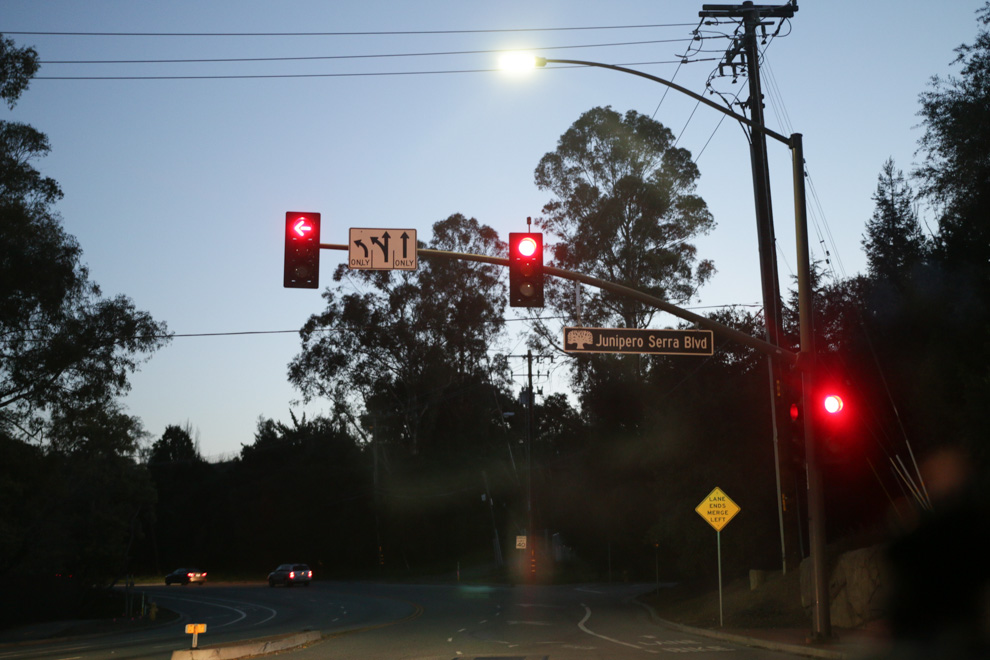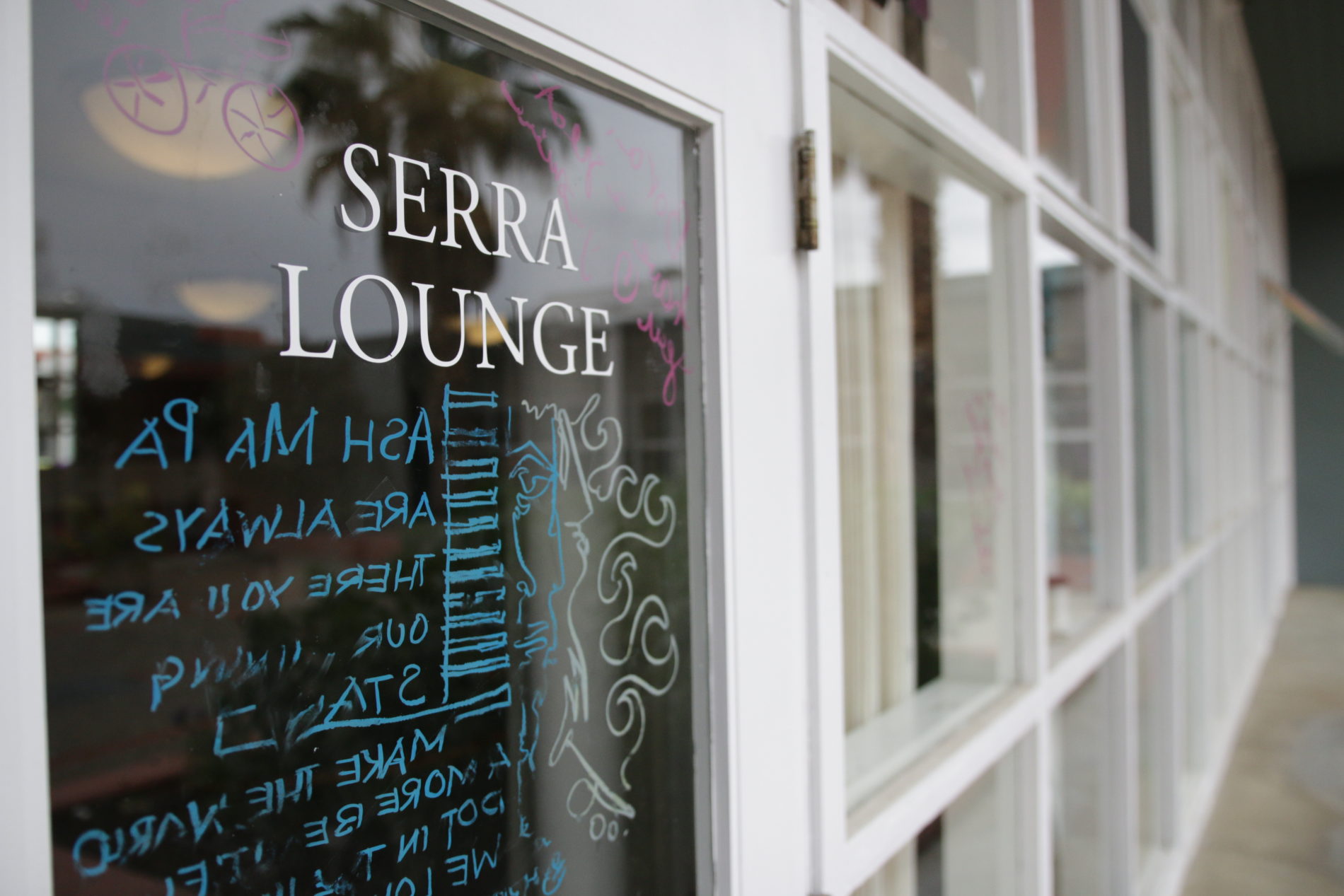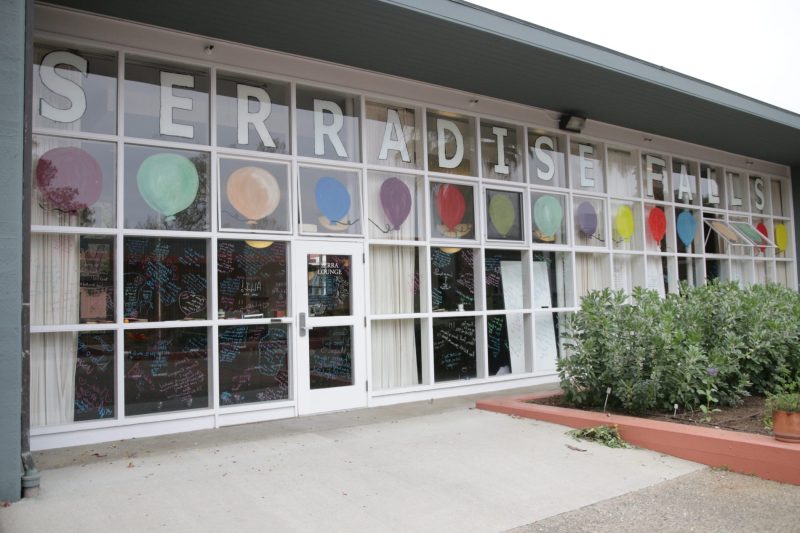After repeated delays, a committee assembled by the University in early 2016 to establish principles for renaming campus buildings and landmarks expects to release its conclusions by the end of fall quarter.
However, in what the committee chair describes as an effort to move an unexpectedly challenging process along, the group’s mandate has changed. At the request of University President Marc Tessier-Lavigne, the faculty, student and staff members of the eight-person committee are no longer aiming to form a recommendation on the issue that jump-started the renaming debate: the street and three campus buildings named after Junipero Serra, a Catholic saint who ran several California missions that have come under scrutiny for their treatment of Native Americans.
Instead, as of spring quarter, the committee is formulating general principles to guide any future renaming deliberations, said the committee’s chair, Donald J. McLachlan Professor of History Emeritus David Kennedy ’63.
Committee members are “still trying to come to a consensus,” he said. If the committee’s deliberations indeed wrap up this quarter, its conclusions will come almost a year later than planned.
“The task has been more complicated than I think any of us anticipated going in,” Kennedy admitted. “I think honestly [Tessier-Lavigne] was trying to simplify things for us since we were having so much difficulty.”
The shift in the committee’s mission didn’t sit well with Leo Bird ’17, an alumnus and member of Montana’s AmskapiiPiikanii tribe who as a student introduced an Undergraduate Senate resolution to replace Serra’s name. Until The Daily mentioned it, Bird hadn’t heard that the group would likely not be issuing a specific recommendation.
“I think it’s just a big slap in the face,” Bird said.

The Serra debate
The renaming committee was formed in March 2016 under ex-University President John Hennessy, following concerns students raised about places on campus bearing Serra’s name. Serra founded the California mission network, which harmed the life and livelihood of Native American tribes in California.
Some argue that Stanford must remove Serra’s name out of respect to the Native community hurt by Serra’s legacy, while others say Serra is being unfairly blamed for the faults of the mission system and worry about judging historical figures by modern standards. The act of renaming has also raised concerns that erasing the names of controversial figures amounts to censoring a complex but important piece of history — a history that universities like Stanford have the duty to educate the public about.
Early textbook accounts of the missions’ legacy portray missionaries’ relationship to the Native Americans as one of father and child, suggesting that settlers saved “savages” from destitute lives. Modern takes give a much more critical view, noting that many Native Americans were held against their will at missions, forced into European ways of life and faced with brutal treatment for going against colonizers’ wishes. Meanwhile, Europeans brought diseases such as smallpox that decimated the Native community; over the course of the mission period, the Native American population in California was cut in half.
Many members of the Native American community at Stanford find Serra’s role in the mission system problematic.
“I think [the name] should be gone,” said Loralee Sepsey ’18, co-chair of the Stanford American Indian Organization (SAIO) and member of the California Big Pine Paiute tribe. “It should be replaced by indigenous names indigenous to the Muwekma Ohlone Tribe, whose lands we are on right now.”
The issue of renaming gained attention at Stanford when Bird introduced his resolution in the Undergraduate Senate, or ASSU. The resolution, which later passed the Graduate Student Senate and Faculty Senate, supports the renaming of four specific places: Serra and Junipero dorms, both of which house freshmen; Serra House, the location of the Clayman Institute for Gender Studies; and Serra Mall, Stanford’s official address. Since Stanford does not have the jurisdiction to rename Serra Mall, the resolution seeks to change the University’s address.
Similar debates have played out at other colleges, including Yale University, where a task force recently recommended the university rename Calhoun College, named after John C. Calhoun — a 19th century senator and vice president best known for his position strongly defending slavery. Last spring at Georgetown University, two buildings named after after university presidents who sold slaves to pay the school’s debts were renamed.
Amid the renaming controversies unfolding across campuses, residents of Serra dorm in Stern Hall whom The Daily interviewed said they don’t feel strongly about the name.
“I don’t have an attachment to the name Serra,” said Olivia Flournoy ’21, a Serra resident. “Since it does represent something that harmed people in the past, I wouldn’t be against changing the name, especially if there were alternatives that were Native American.”
However, Kaan Ertas ’21, another Serra resident, believes the dorm name Serra no longer represents the missionary himself.
“Serra stands for the house of Serra and its own traditions rather than the person after which it was named,” Ertas said, adding that he is not against renaming but would not “radically support it.”
Some members of the Catholic community at Stanford feel more conflicted, said Katie Hufker ’18, president of the Undergraduate Catholic Students Association.
Hufker, who acknowledged the complexity of the issue but believes Serra deserves his sainthood — “he firmly believed that he was doing what was right at the time,” she argued — said the Catholic community as a whole is less “political” than other groups on campus and as a result has been a quieter voice in the renaming debate.
Hufker is not against having a conversation about renaming places named after Serra.
“Stanford is an incredibly diverse place with people from a lot of different backgrounds,” she said. “If there are students that are really hurt by the legacy of the missions as whole, that’s a conversation worth happening.”
However, Hufker noted that Serra is not responsible for the entire legacy of the mission system, saying that he is being scapegoated.
“The mission system changed after his death and the mission system as a whole is more than just Serra,” Hufker said.
Similarly, chair of Stanford’s renaming committee Kennedy has written previously that individuals memorialized on campuses should be considered in the “totality of [their] life” rather than discarded for offensive views common in their times. In a letter to the Princeton Board of Trustees about a proposal to remove Woodrow Wilson’s name from the university’s public policy school due to his racist and pro-segregation views, Kennedy argued that choices about memorials require “the fullest appreciation of the circumstances.”
“Princeton surely does not honor Wilson because of his racial views … But it has recognized that in the fullness of his passage through this vale of tears and disappointment, while he may well fall short of sainthood, on balance his was a life of extraordinary accomplishment,” Kennedy wrote.
Discussion of removing Serra’s name has caught the attention of some outside campus as well as students and faculty.
In a letter to The Daily in 2016, a spokesperson for the Catholic League for Religious and Civil Rights argued that Serra as an individual helped protect Native Americans against “the violent abuses directed toward them by the Spanish colonizers.”
Jerry Underdal ’65, a retired history teacher and alumnus, has followed Stanford’s renaming committee with interest as a member of a similar committee formed for the Palo Alto Unified School District (PAUSD). He emailed with Kennedy several times about renaming issues and sent the professor thoughts last spring after inquiring about the Stanford committee’s progress. With a report still forthcoming in October, Underdal noted that the students who began the Serra renaming push have graduated and criticized the committee delays as “disrespect shown students who raised a legitimate and very important concern.”
In a letter to Kennedy in May, Underdal said he generally favors retaining problematic names but urged increased education about uncomfortable aspects of memorialized figures.
“I wouldn’t advise the university to take on the Pope and directly challenge the suitability of a newly elevated saint to have a freshman dorm named for him,” Underdal wrote. “But Stanford should redouble its already significant efforts to raise awareness and understanding of the Muwekma people, whose ancestors occupied this region for millennia before Europeans arrived to seize their lands and waters and annihilate their culture.”
The PAUSD committee Underdal sat on coalesced at around the same time as Stanford’s to consider renaming schools that bore the names of three eugenics proponents — David Starr Jordan, Lewis Terman and Elwood Cubberley, all of whom are also commemorated with Stanford buildings as major figures in the University’s history. Last February, the Palo Alto group recommended renaming in an over 60-page report.
Underdal said his committee grappled with reluctance from much of the Palo Alto community as it discussed name changes and urged Stanford to take action as a “leader.”
“Let’s lead the country,” he said. “This is a leading institution. It’s not supposed to follow.”

Progress of the committee
When the Committee on Names began gathering community input in spring of 2016, it expected to have criteria for renaming by the following October and announce its recommendations in the winter. Kennedy told The Daily at the end of last school year that the committee expected to wrap up its work in “several weeks,” but deliberations stretched throughout the summer.
Bird, back home in rural Montana, said they were frustrated but not wholly surprised that the question of Serra’s name was not resolved by the time they graduated this past June. (Bird uses gender neutral pronouns.)
“They really want to flesh it out, they really want to take their time and have debate about it, but in my mind there’s nothing to debate about,” Bird said.
Discussing timing, Kennedy attributed delays to the desire to weigh a complex issue appropriately.
“We’ve had to be quite careful and deliberate and do a lot of consultation about [this] ourselves, and iterative discussions,” he said. “It’s just time consuming.”
Face-to-face discussions have proved difficult to coordinate, particularly over the summer break as members travel, and the committee has not met since June. But members were still at work, Kennedy said, exchanging emails. The two students currently sitting on the committee, Miguel Samano ’19 and Carson Smith ’19, worked over the summer on outreach efforts to two communities in particular: Catholics and Native Americans at Stanford.
The committee has met in person a total of 14 times since its formation, according to University archaeologist Laura Jones, the group’s staff member. In that time, the committee’s makeup has changed somewhat; both Smith and Samano joined last spring as nominees of ASSU, while one of the first two students appointed to the group has left since graduating in 2016. One faculty member left the committee this summer due to “competing work demands,” Jones said.
Multiple committee members did not respond to requests or declined to discuss the committee, referring The Daily to Kennedy as chair. Committee members range widely in discipline, from English (Professor Michele Elam) to sociology (Professor Matt Snipp) to religion (Dean for Religious Life and Professor Jane Shaw).
Hufker said that beyond her contact with Samano around July she has little idea of what the committee is up to, and said she just hopes that if Stanford were to ever get rid of the Serra name, the Catholic community and other groups will have a part in picking replacements.
“It seems like the process is more or less happening behind closed doors,” Hufker said. “The committee seems like a bit of a black box, but maybe that’s the way it is for all of campus, not just the Catholic community.”
Kennedy denied that the committee has felt “pressure” to complete its work, saying only that members are “eager to get it done” and citing the complexity of the task. He declined to answer questions about the committee’s discussions, saying it would be inappropriate with deliberation ongoing.
A final report will go to President Tessier-Lavigne, who ultimately decides what will be made public, Kennedy said.
Stanford spokesperson E.J. Miranda said in an email to The Daily that Tessier-Lavigne has given “some staff support to assist the committee in its work” and “has been encouraging the committee to bring its work to a conclusion.”
“However, he also respects that the committee operates independently and that it will reach its conclusions independently,” Miranda wrote.
Miranda did not respond to a question about whether the University expects a follow-up process to examine the question of Serra’s name specifically.
As the renaming discussion continues, Sepsey cautioned against dismissing debate over Serra as one about “just one person” or something that “happened a long time ago.”
“Someone who is not Native can see Serra’s name and just not have any connotations attached to it, but if you knew that history and if you grew up hearing these things, seeing that name honored can be really harmful — at least for me,” she said.
Contact Hannah Knowles at hknowles ‘at’ stanford.edu and Claire Dinshaw at cdinshaw ‘at’ stanford.edu.
